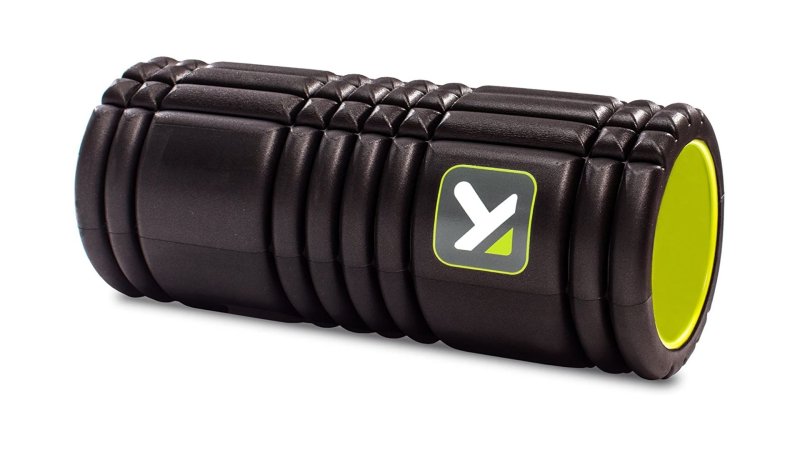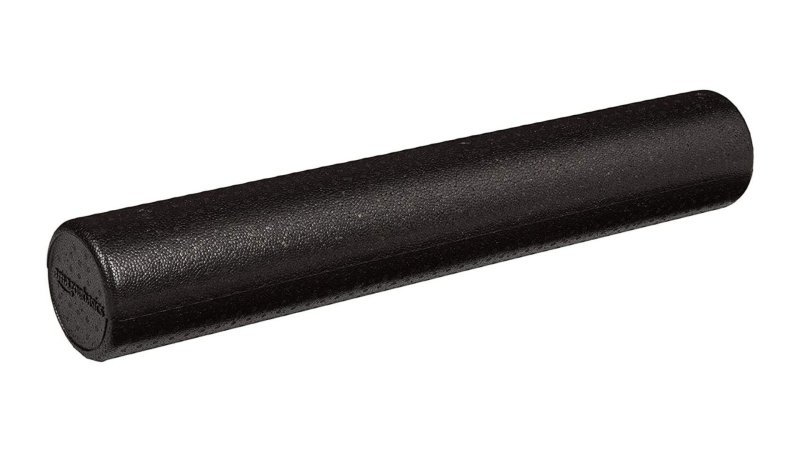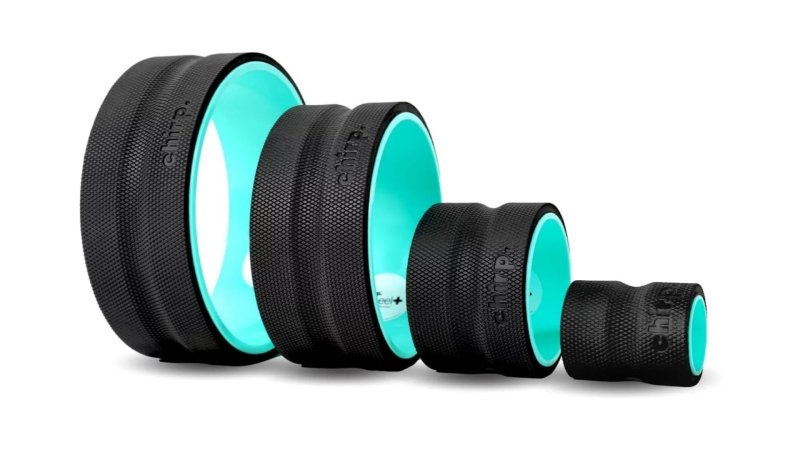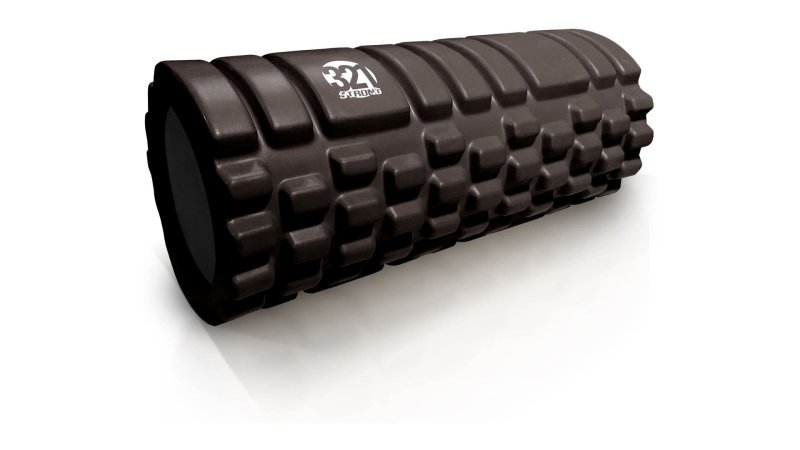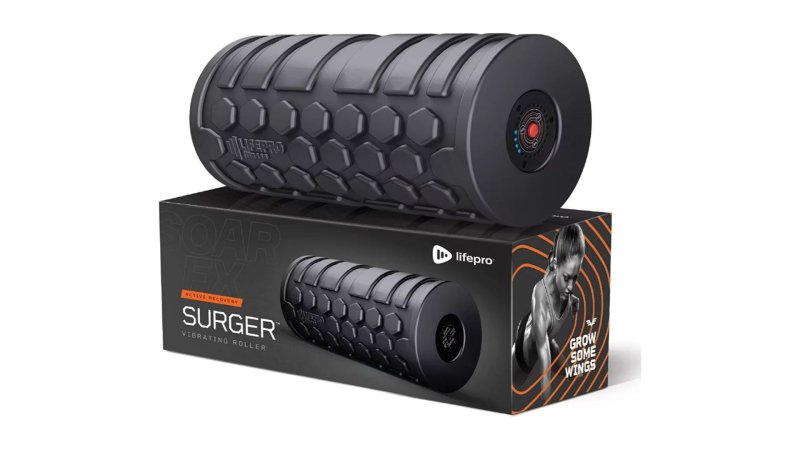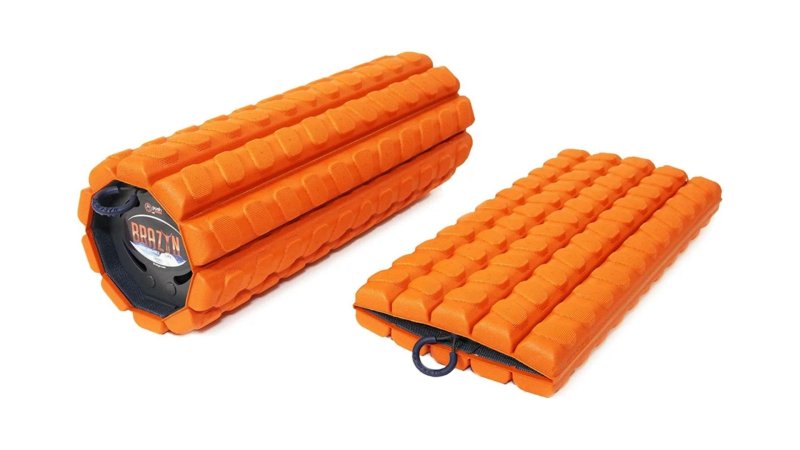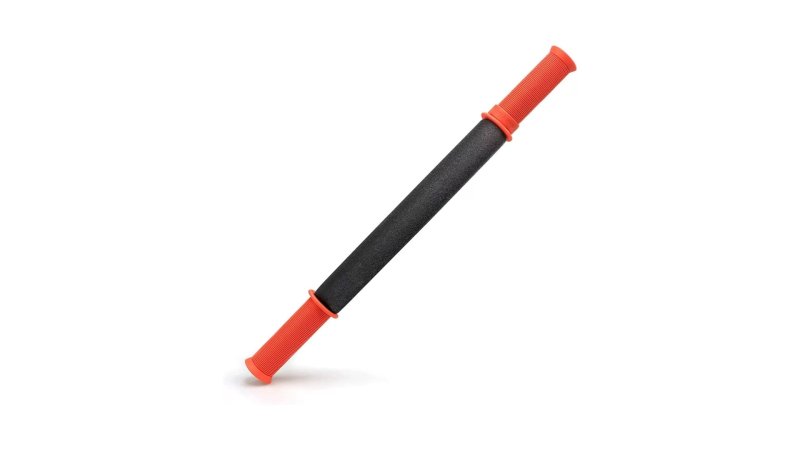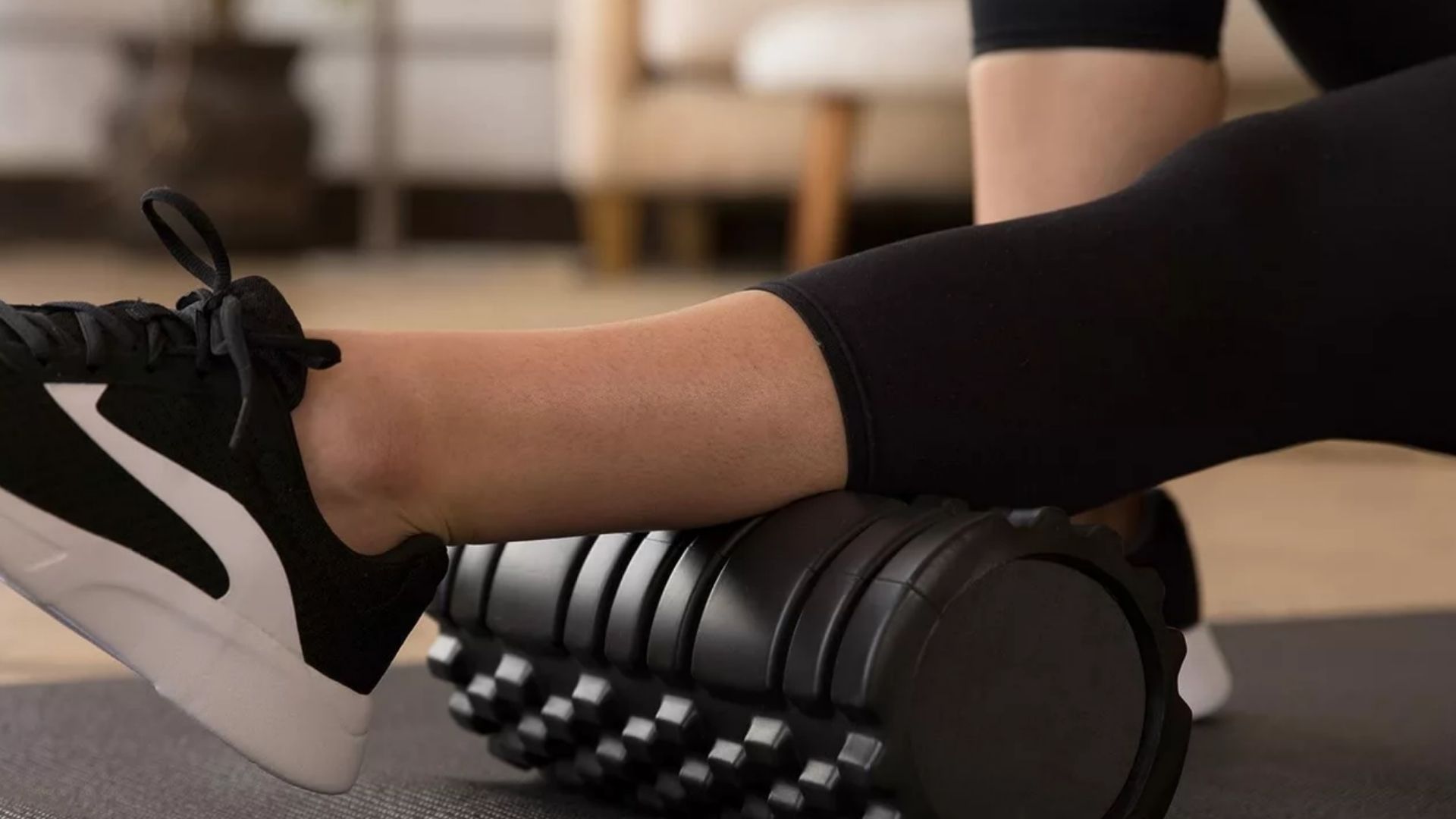

We may earn revenue from the products available on this page and participate in affiliate programs.
If you’re searching for the best foam rollers on the market, chances are you’re already feeling the pain of working out, getting old, or just sitting in an office chair all day. Typically, a foam roller is not something you buy when everything is hunky-dory and you’re feeling like a million bucks. Instead, it tends to be a reactionary purchase to workout soreness, muscle or spinal ailments, or a degradation in your range of movement. Making sure you purchase the right roller is an important part of the recovery and sustainment process.
Navigating the long list of foam roller options could be a daunting task, especially if you’re unclear about what the differences could mean for you and your pesky injury. To help combat the confusion, we’ve put together a list of the top foam rollers in a variety of different categories to help you find the right roller to fit your needs and get you back into the workouts you love (or hate, but do anyway because you’re a badass).
- Best Overall: TriggerPoint GRID
- Best Budget: Amazon Basics High-Density Round Foam Roller
- Best for Back Pain: Chirp Wheel+
- Best for Runners: 321 STRONG Foam Roller
- Best Vibrating: Lifepro Surger 4-Speed Vibrating Foam Roller
- Best Collapsible: Brazyn Morph Foam Roller
- Best Roller Stick: Tiger Tail 18in Massage Stick
Best Overall
TriggerPoint GRID
Pros
- Employs multiple foam densities
- Grid cut foam for customized experience
- Durable hollow core
- Variety of color options
- Variety of size options
- Affordable
Cons
- May be a bit firm for people new to foam rolling
Product Specs
- Product dimensions: Length: 13 inches / diameter: 5.5 inches
- Weight limit: 500 pounds
- Materials: EVA (Ethylene Vinyl Acetate) foam around a hollow core
Best Budget
Amazon Basics High-Density Round Foam Roller
Pros
- Affordable
- High-density to provide a stiff rolling surface
- Molded edges to prevent chipping
- Multiple color options
- Lightweight
Cons
- Limited functionality
- May degrade structurally over time
Product Specs
- Product dimensions: Length: 36 inches (also available in 12, 18, and 24 inches) / diameter: 6 inches
- Weight limit: None
- Materials: Polypropylene
Best for Back Pain
Chirp Wheel+
Pros
- Helps alleviate back pain
- Helps correct spinal curvature and posture
- Features “spinal channel” for maximum comfort
- Non-slip texturing on foam mat
- Comes in individual sizes or pack of multiple sizes
Cons
- May not be as useful for other areas of the body
Product Specs
- Product dimensions: Length: 5 inches / diameter: 12, 10, 6, 4 inches
- Weight limit: 500 pounds
- Materials: EVA foam compression mat around a hollow ABS plastic core
Best for Runners
321 STRONG Foam Roller
Pros
- Medium density for beginners or extremely tender muscles
- Grid cut foam for customized experience
- Solid core
- Variety of color options
Cons
- May need to upgrade to a high-density roller later
Product Specs
- Product dimensions: Length: 12.75 inches / diameter: 5.25 inches
- Weight limit: 500 pounds
- Materials: EVA foam, solid core
Best Vibrating
Lifepro Surger 4-Speed Vibrating Foam Roller
Pros
- Vibration helps relieve tension and increase blood flow
- Four vibration setting
- Three duration settings
Cons
- Higher price
- Foam might be to low-density for some users
Product Specs
- Product dimensions: Length: 13 inches / diameter: 5.5 inches
- Weight limit: Not specified
- Materials: Foam (sorry, that’s all they give)
Best Collapsible
Brazyn Morph Foam Roller
Pros
- Collapses to only two inches thick
- Portable
- Environmentally-conscious
- Two surface texture options
Cons
- Higher price than most basic foam rollers
- Lower weight capacity
Product Specs
- Product dimensions: Length: 14.5 inches / diameter: 5.5 inches
- Weight limit: 350 pounds
- Materials: Bamboo / recycled aluminum / foam shell
Best Roller Stick
Tiger Tail 18in Massage Stick
Pros
- Keeps you off the floor
- Portable
- Durable
- Affordable
Cons
- May be harder to reach areas of the back
- No texturing for deeper tissue massage
Product Specs
- Product dimensions: Length: 18 inches / diameter: 1.62 inches
- Weight limit: None
- Materials: Plastic and medical-grade foam
Things to consider before buying a foam roller
Types of foam rollers
A key prerequisite of good foam rollers is their ability to — well — roll. This is why foam rollers tend to have the same long, cylindrical shape. Beyond this uniting feature, though, foam rollers can vary dramatically depending on their foam density, texture, core structure, or internal mechanics (as in the case of collapsible or vibrating rollers).
Two of the major features you’ll want to focus on when selecting a foam roller are the roller’s density and the texturing. With density, most foam rollers offer either medium- or high-density exteriors, with medium-density rollers being recommended for beginners or those dealing with severe pain, as they are more forgiving. The higher the density you go, the stiffer the massage will be.
The exterior pattern, or texture, of the roller is another major feature to consider. Basic foam rollers usually have flat, smooth surfaces, allowing you to spread the pressure of your weight over a larger surface area. Foam rollers with more intricate patterns or deep-cut grooves are intended for users who wish to get into deeper tissue and focus on more targeted areas of their muscles.
How to use foam rollers
In general, foam rollers are used as a way of easing muscle tension and soreness in areas of your body ranging from the bottoms of your feet to the back of your neck. You could probably even get in the downward dog position and massage the top of your scalp if you wanted to, though I’ve never seen it done. Foam rollers are typically used just before and/or just after a workout as a means of warming the body up and cooling down, respectively. The use of the foam roller post-workouts helps to increase blood flow and can prevent lactic acid in your muscles which would otherwise lead to soreness. Foam rollers are also used to work out existing muscle knots and promote increased flexibility and range of motion in your major muscle groups.
Foam rollers are simple and easy to use. With the foam roller on the ground, you simply place the desired muscle group above the roller and let your body weight create the pressure. With your arms and/or your legs, you slowly move back and forth allowing the roller to move over the desired area. This may be painful at first, especially for new users, but you can adjust the pressure simply by adjusting how much of your body weight you are holding up. By pivoting your body’s position on the roller, you can zero in on problem areas to work out specific muscle knots or get deeper into tissue. Most foam rollers come with instructional guides or offer free video guides online to demonstrate helpful techniques.
Benefits of foam rollers
Foam rollers offer a lot of health benefits for athletes and non-athletes alike. Not only does it feel good to get a massage, but by rolling out muscles, you can help to alleviate soreness/stiffness, increase blood flow, and increase muscle length (muscles tend to contract during post-workout recovery). All of these help to aid muscle recovery and help to improve future performance. Foam rollers have also been linked to improved posture, improved spinal flexibility, and corrected spinal curvature, not to mention relieving lower back pain caused by sciatica or inflammation of the soft tissues of the thoracic spine.
FAQs about foam rollers
Q: How much do foam rollers cost?
A: You can buy a good, basic foam roller for $15 to $20, but these are typically going to be solid core, polypropylene rollers with not much to offer in the way of surface texture. If you’re looking for a roller with some texture or a nice grid pattern, expect to pay between $30 and $45. Once you get above $45, you start to get into the foam rollers that offer extra features, such as vibration and collapsibility. These can range up over $100.
Q: Why does using foam rollers hurt?
A: When you start using a foam roller, you should expect it to hurt. In order to work out the tension of your muscles, you are applying pressure in order to elongate that tissue and/or work out existing knots that can form during workouts. Have no fear, though, because it’s supposed to hurt and the results are worth it. Prolonged pressure on muscle knots will cause them to release, and provide much-needed relief. Consistent use of your foam roller can help elongate muscles resulting in fewer injuries and less soreness.
Q: Can foam rolling be harmful?
A: Yes, but only in the way that anything can be harmful if not used correctly. Before using a foam roller, you should try to identify the cause of any pain or injury you might have. Once identified, be reasonably sure that a foam roller could be a potential solution. You won’t use a foam roller to treat a torn ACL or a herniated disk in your back. Be smart and consult a physician if you’re unsure.
Final thoughts
Working out is great, but it can lead to various pesky recurring aches and injuries. The older you get, the more important it is to take care of yourself pre- and post-workout or to just maintain a baseline of flexibility. The TriggerPoint GRID is a versatile, cheap, in-home way to alleviate the aches and pains of everyday life, so you can stay active and agile.
Methodology
I’ve been around the block a time or two when it comes to foam rollers. As a long-time long-distance runner, I’ve had my share of muscle/tendon ailments that have put me on the sidelines, and I’ve used foam rollers for a long time as a means of tempering those issues. Most recently, I’ve been dealing with a prolonged case of sciatica that has put me in and out of a physical therapy office for several months. While there, I used a wide variety of foam rollers and gained first-hand knowledge of the feel of different densities, grid patterns, and sizes. After completing my rounds of physical therapy, I bought the TriggerPoint GRID so that I could continue the therapy on my own at home. With all this first-hand experience, I feel confident in the recommendations I’ve made on this list.
Hands-on experience aside, I also spent hours researching different makes and models of foam rollers online. To do this, I consulted other similar product lists, online health journals, and even fitness videos on YouTube to see what the professionals were saying about the best foam rollers on the market. In order to narrow my list down to the select seven rollers featured above, I took special consideration into the rollers’ density levels, grid patterns (or lack thereof), durability, and how they fared in the reviews by those who’ve already put them to the test.
